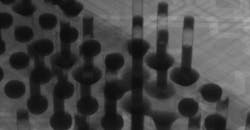Solder thieving is the movement of liquid-phase solder metals away from their deposited location during the reflow process. Without a proper connection between the part and the PCB, parts will have inadequate mechanical, thermal, and electrical connectivity. The problem appears during the assembly process and is often blamed on the assembler. But in reality, it can be traced back to a single design decision. Learn what causes solder thieving and how to avoid it in this whitepaper from Advanced Assembly.

